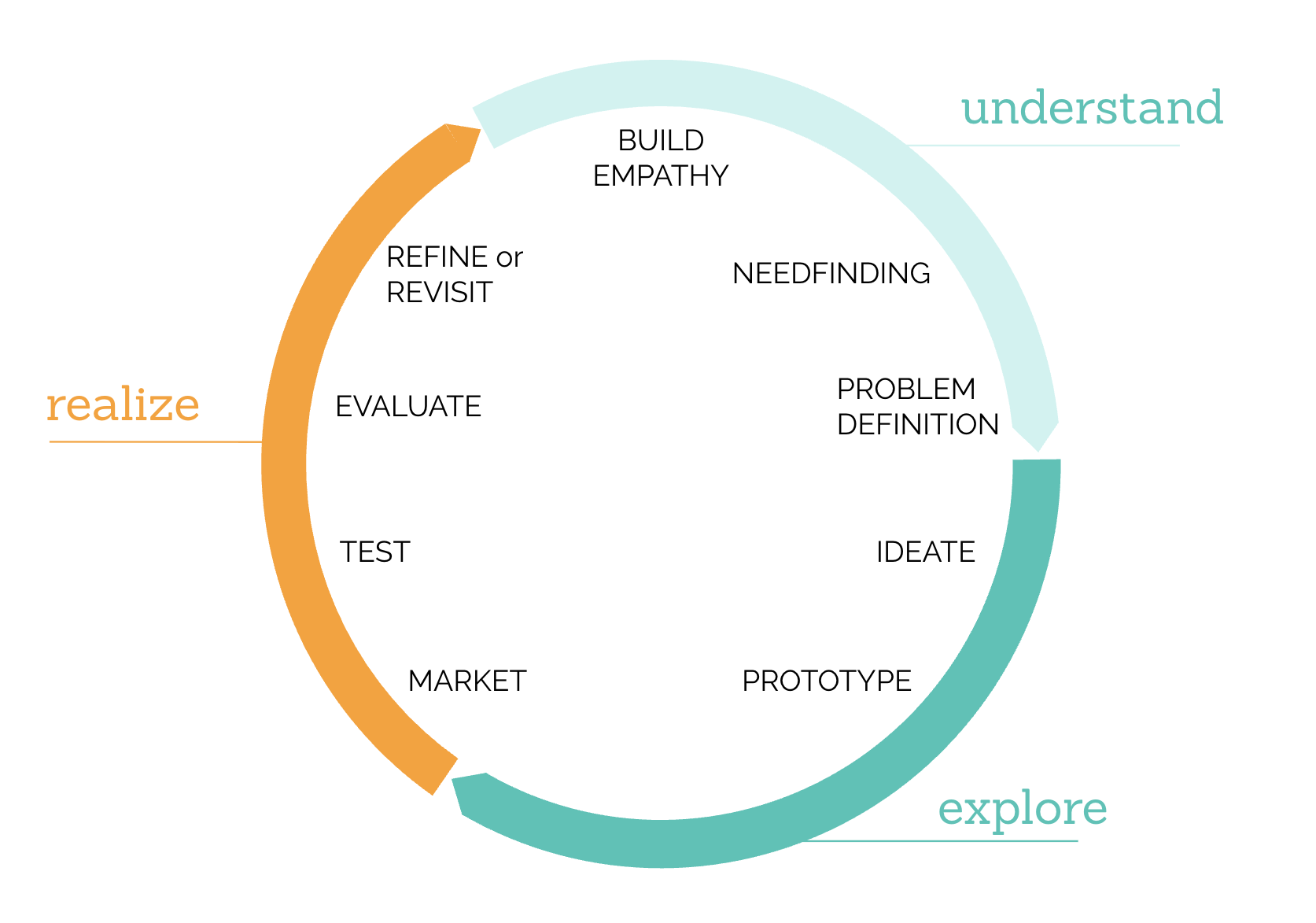If you work at Change Labs, you are a designer.
Design is not merely about aesthetics or functionality; at its core, design is about problem-solving. It is the art of identifying challenges, empathizing with those affected, and crafting elegant solutions that enhance lives. It is a holistic approach that embraces ambiguity and uncertainty. It is also a mindset—a way of seeing the world and approaching problems with curiosity, creativity, and collaboration. In this worldview, every challenge is an opportunity waiting to be embraced.
Whether you're designing a workshop, a service, a space, or an experience, the principles of design are universal. They remind us to ask the right questions, challenge assumptions, and iterate relentlessly until we uncover the best possible outcome.
Program Design
Before you launch or reboot a Change Labs program or initiative, here’s a list of program design documentation that will help you work your way through the Understanding, Explore, and Realize phases.
1) Target Member Profile
Just as we tell our members that identifying their target customer is critical, we too must go through the exercise of identifying and creating a profile for our target members. Be specific! We do not serve “anybody” and “everybody” with our programs. Getting specific will help you define strategy and most effectively use your program budget.
2) Member Experience Map
Built off of a Customer Experience Map, your map should indicate your detailed plan for how your target member will find out about your program, how you will engage them, how you will support them, and how you will incorporate them into the Change Labs community post-program.
3) Operating Protocols
Your approved Experience Map informs your operating protocols. In order to create the experience you defined in your Map, what must be done on the back end to achieve that experience? For example, if part of your experience is that all members receive monthly care packages, your operating protocols should detail who is responsible for curating the materials for the care packages (and by when), who is responsible for shipping (and by when), and so on.
4) Curriculum Design (for training programs)
If you’re providing training as part of your program, prepare to present a detailed syllabus to the team that includes the objective of each class, three things we hope members can do by the end of each class, materials needed, proposed speakers, worksheets/tools presented, and an engagement plan for each class.
5) Program Assumptions
Every time we launch a new program, we’re making a TON of assumptions. For example, we assume that entrepreneurs want loans. We assume that our borrowers will modify their behavior to receive loan forgiveness. It’s likely that most of our assumptions are incorrect — and more often than not, we don’t even recognize that we’re making assumptions. Before launching your program, document the assumptions you’re making.
6) Program Indicators
ONE MONTH BEFORE PROGRAM LAUNCH DATE
All programs are evaluated on a regular basis. The program leads must coordinate with Ananda one month before the launch to ensure your program addresses the outcomes (goals) and outputs (deliverables) that we’ve defined for your program. If there’s a disconnect, the evaluation plan must be revisited with Causal Design before a program can launch.
7) Marketing Campaign
ONE MONTH BEFORE PROGRAM LAUNCH DATE
Last but not least, we’ve been significantly under-investing in marketing of our programs. Each program has a marketing budget that must be fully spent down to help you reach your target members. Present your plan of how you will market your program to your target members, and most importantly ensure you have adequate time to fully implement your campaign.

